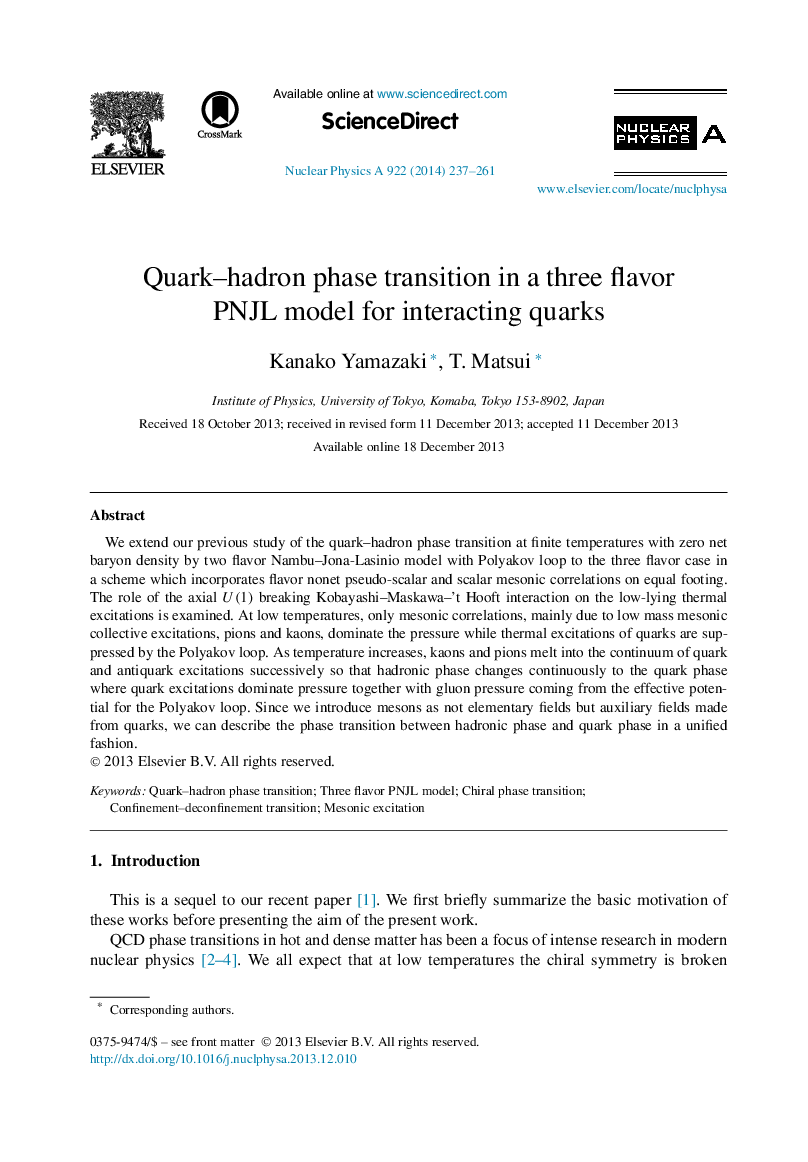| Article ID | Journal | Published Year | Pages | File Type |
|---|---|---|---|---|
| 1835879 | Nuclear Physics A | 2014 | 25 Pages |
We extend our previous study of the quark–hadron phase transition at finite temperatures with zero net baryon density by two flavor Nambu–Jona-Lasinio model with Polyakov loop to the three flavor case in a scheme which incorporates flavor nonet pseudo-scalar and scalar mesonic correlations on equal footing. The role of the axial U(1)U(1) breaking Kobayashi–Maskawa–ʼt Hooft interaction on the low-lying thermal excitations is examined. At low temperatures, only mesonic correlations, mainly due to low mass mesonic collective excitations, pions and kaons, dominate the pressure while thermal excitations of quarks are suppressed by the Polyakov loop. As temperature increases, kaons and pions melt into the continuum of quark and antiquark excitations successively so that hadronic phase changes continuously to the quark phase where quark excitations dominate pressure together with gluon pressure coming from the effective potential for the Polyakov loop. Since we introduce mesons as not elementary fields but auxiliary fields made from quarks, we can describe the phase transition between hadronic phase and quark phase in a unified fashion.
